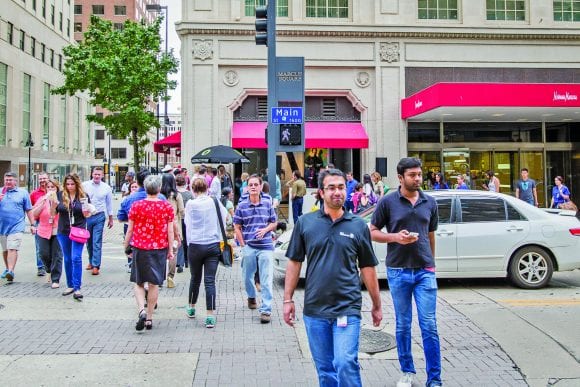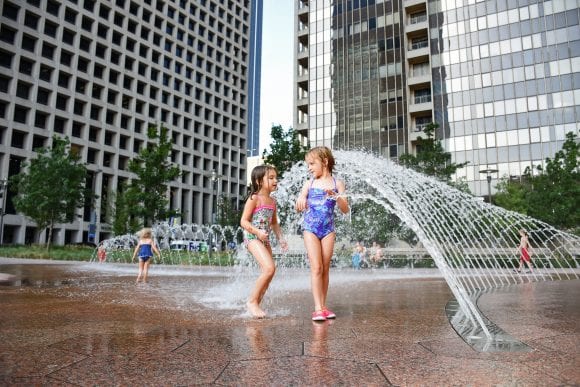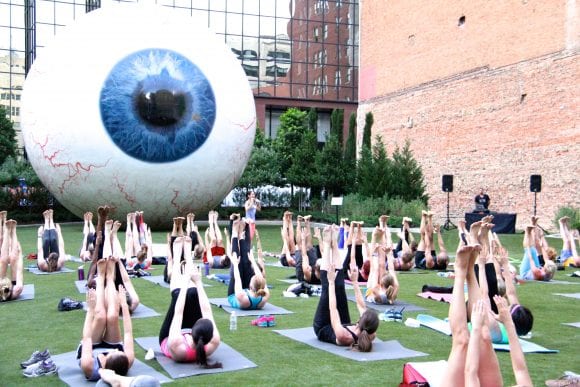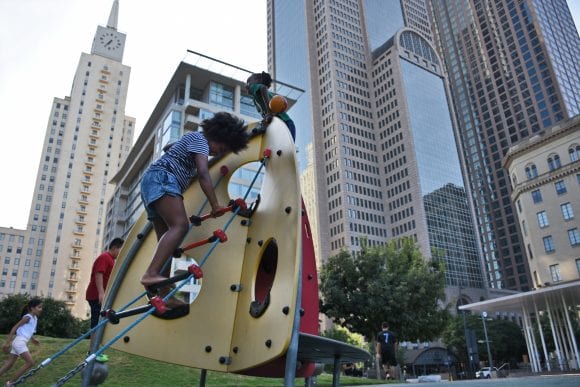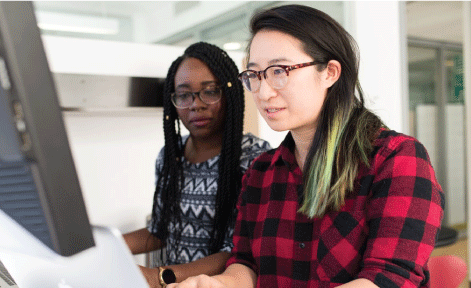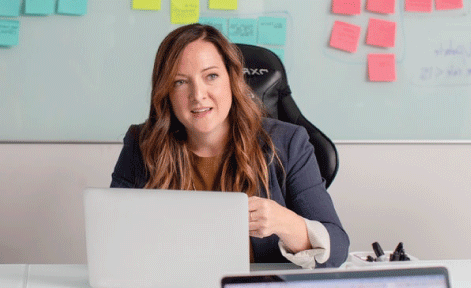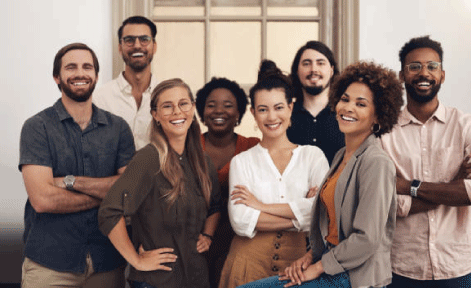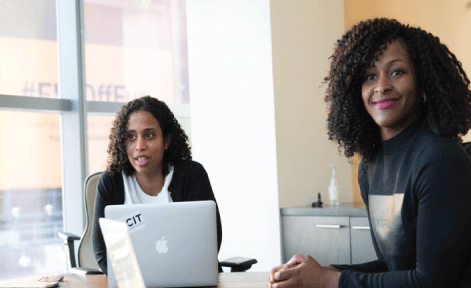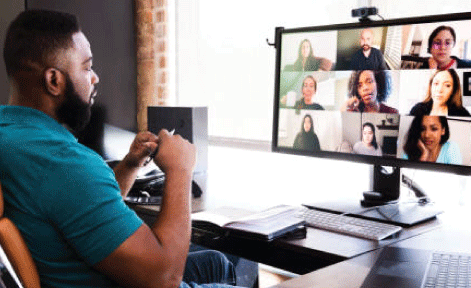Name: Simbarashe Musarurwa
City: Dallas
Neighborhood: Downtown Dallas
Company/Title: Dialexa, Senior Solutions Engineer
When did you move here? From where?
I moved from Austin, Texas, before that Wichita Falls, Texas, and prior to that my home country, Zimbabwe. This initial move was solely for the purpose of education. I was accepted at Midwestern State University as an undergraduate studying computer science.My main focus when I first came to the U.S. was trying to get through school as quickly, but also as effectively, as possible. The transition to living in Wichita Falls, and Texas in general, wasn’t as hard for me as I thought it would be, except for, surprisingly, language barriers. English is one of the official languages in Zimbabwe, but I was often left very perplexed by the local idioms used and some of the deeper Texas drawls here, even though whomever I was talking to was also speaking in English. What made the transition of living in Texas so much easier was that the people that I met treated me so well and welcomed me as a friend — and with some people I even feel like I gained an extended family.
What made you decide to Say Yes to Dallas?
Ultimately, I moved to Dallas so I could pursue a dual career as a software developer and as a rugby player. Before I graduated from college in Wichita Falls, I was approached by a rugby team, the Griffins, based in Allen, who wanted me to play for them after I graduated college. I already had a commitment in Austin to start work. However, after a brief stint working there, I decided to move up to Dallas so I could play for this new rugby team, and work as a software developer for a health startup company, which was coincidentally also the main sponsor of my rugby team.
How did you choose where to live in the Dallas Region?
I wanted to be as close to work as possible, and my company, Dialexa, is located in Downtown Dallas. I also enjoy the prospect of being close enough to walk to a plethora of exciting and diverse experiences such as the Farmer’s Market, or to all of the different bars and restaurants in Deep Ellum.
How has your opinion of the Dallas Region changed since moving here?
I always used to think that traffic in Dallas was horrible, and then after living in Austin, I realized that Dallas’ is mildly annoying but in reality not at all that bad. Another myth that I had heard in my time in America was that people from Dallas were somewhat aloof, but I don’t think that is true. People here just have a passion for their city and what it represents to them.
Tell us about your city/neighborhood. What do you like best? What makes it different?
I live close to the Farmer’s Market, so the convenience of being able to regularly stock my fridge with fresh fruit and vegetables is awesome. Also, the local stores and trades, especially in The Cedars, are very amiable, and I have made friends with many of the store owners. It always feels like I’m going to go and visit my friends rather than going to a store just to buy goods. The products seem to be just that much better because they are made with the love and dedication of these store owners. For example, I often enjoy coffee from the local roaster Mike at Full City Rooster who makes some of the best coffee I’ve ever had —I never thought of myself as a coffee aficionado until I had his. I often go to Full City Rooster on the weekends, grab some coffee and spend time with Mike and his family as they roast and run the establishment. I’m also friends with Katherine Clapner, who runs Dude Sweet Chocolate, some administrators of the Farmer’s Market, and so many other awesome characters from within the Dallas community. Through these people I have learned about the history of Dallas, and, in some regards, I know more little tidbits about this part of Dallas than some people that were born and raised in the Dallas Region!
Can you tell us more about Deep Ellum?
Deep Ellum is a thriving and up-and-coming community just outside of Downtown Dallas. It is home to sports bars, restaurants, live music performances, comedy houses, art stores, and a plethora of other fun and unique establishments that add to the vibrant and lively atmosphere here. Recently, I found possibly the best barbecue I’ve ever had in my life when I ate at Pecan Lodge, and I highly recommend it to anyone that ever finds themselves in the area. I also love bringing any new people to the area to have a drink at Braindead Brewing. They brew their own very good beer and also have some other local brews on tap, including cider from the Bishop Cider Company in the Bishop Arts District. For anyone that likes noodles, I love going to Monkey King Noodle Company, where they hand-make all of their noodles on sight and are easily some of the best I’ve ever had.
What advice would you give to someone who wants to move here?
Get in touch with some sort of social organization, hobby group, church, or anything, and get to know the people that live in Dallas. They will be instrumental in getting you acclimated to the area and making you feel welcome.
What is your passion, and how does Dallas help fulfill it?
I’m passionate about technology. In Dallas, there is a vast selection of Hackathons, meetups and tech events that give those with a passion for technology and learning an opportunity to learn more or to implement a new and awesome idea they already had. In addition, my job has begun fostering the creativity and passion I have for technology. I found that the underlying core principle in my field of work is to make cool and innovative tech solutions for any problem. I have been to one Hackathon here in Dallas, when I was doing some software development with the Microsoft Kinect; it focused on computer visionaries. Hackathons are fun competitions where software developers meet up to build awesome stuff using a particular technology or based on a theme, such as solutions for a particular industry. What sets Hackathons apart from friends meeting at home to make software is that at Hackathons, whatever the developers make is usually built within the day or two that the Hackathon is happening. Most times there is a prize for the team that builds the winning project, but regardless, it’s always a great and fun experience seeing the kind of awesome stuff that people build. In fact, some great ideas and companies began at hackathons. At Dialexa, we are highly encouraged to be involved with these sorts of events because they are conducive to creativity and working under pressure (hackathons always have a time limit). For people interested in technology, implementing something new or crazy, or just wanting to hang out with a bunch of developers and drink beer while coding, going to a local hackathon is definitely where it’s at!
What is your idea of a perfect day in the Dallas Region?
A perfect day for me may begin with breakfast at Breadwinners Café with my girlfriend. I may also stop by Full City Rooster and pick up some coffee for the week. The afternoon would be spent walking and exploring somewhere I haven’t been — maybe the Bishop Arts District, Deep Ellum or the Design District. I’d like an evening spent relaxing with friends, sharing conversation or just plain tomfoolery, if that’s what the night has called for.
What is your favorite restaurant?
Rodeo Goat, a bar/grill/ice house in the Design District.
How do you interact with your community?
I am very involved with my church, Highland Oaks Church of Christ. I volunteer with the middle school children when I can, and this past summer, I was part of a mission trip with them to the Fort Worth/Arlington area. Being a member of a church is awesome; it’s a great way connect and get plugged involved in all the community activities, family events, and outreach programs.

